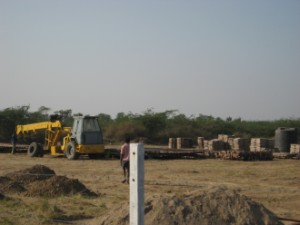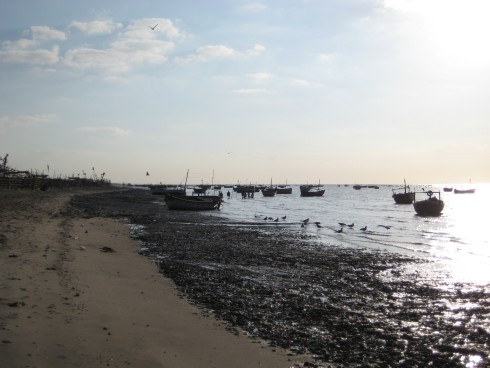.
All of this didn't stop the company from announcing its Bhoomi Puja in November 2010. The state government's clear directions that "the project
proponent shall not start any construction/project-enabling activities unless and until environmental clearance as well as all requisite prior
permissions/clearances are obtained" was simply ignored.
Recent developments
In July last year, the company suffered a setback; its proposal to build an intake channel to the thermal power plant was rejected by MoEF's Expert
Appraisal Committee (EAC) for Building Construction, Coastal Regulation Zone, Infrastructure Development and Miscellaneous projects in July 2010. The
committee felt that the coastal environment would be negatively impacted by the construction of an open channel, and instead suggested that OPG could
consider the construction of a pipeline instead, to provide for water requirements of the 300 MW plant.

During a site inspection by the MoEF in December, it was found that the company had begun preparations for the plant even before
environmental clearance process was complete.
(Above: The work site with labour camps and a bulldozer).

•
Clearances: A sham again
•
A crevasse in regulation
 The construction of the expanded plant itself would still need to be reviewed by the EAC; and so would the proposal for a pipeline, if that option is
chosen. The company was also directed to seek recommendations for a revised proposal from the Gujarat State Coastal Zone Management Authority.
The construction of the expanded plant itself would still need to be reviewed by the EAC; and so would the proposal for a pipeline, if that option is
chosen. The company was also directed to seek recommendations for a revised proposal from the Gujarat State Coastal Zone Management Authority.
The EAC met again on 14-15 February 2011, to once again discuss the intake and outflow for the thermal power plant, as required under the rules for
construction in the Coastal Regulation Zone. The agenda of the meeting does not specify what was discussed - a pipeline or an open channel - and there
continues to be mixed news from anonymous sources on whether or not the EAC recommended approval of the company's proposal.
Site inspection reveals violations
Meanwhile, responding to a series of tireless submissions, memoranda and requests from the local struggle groups, fisherfolk as well as media outcry,
one MoEF representative visited the Bhadreshwar coast for a site inspection in December 2010. In his site inspection report A Senthilvel, Additional
Director, MOEF remarked that the site is fenced by barbed wires and also cleared of vegetation. With regards to the site for intake channel, the report
observed that the intertidal area is more than 2-3 kms, which is large. Further, "the entire stretch is a mud flat, which is highly biologically
protective. The coastal waters are known for Bombay duck fishery. The fish catch was also seen in abundance."
This report also highlighted the fact that the Environment Impact Assessment (EIA) for the project, based on which the environment clearance was
granted did not cover a very crucial aspects of the poor road conditions in the area and the huge impacts of the movement of coal in the region.
To quote the report, "the imported coal is proposed to be transported from Mundra port, which is 25 km from the site and Kandla Port, which is 48 km.
The indigenous coal would be brought by ship to the port or by road or by railway line. As per the information provided the coal would be transported
from these ports through covered trucks. As per the information about 150 to 200 coal trucks are expected to move daily. This would be in addition to
the fly ash that will be moved out from the project site." This, the report says, is not appropriate from the environmental angle and such traffic
through villages is not called for.
During the site visit, if was found that OPG's machinery such as cement mixers were stashed behind bushes. Concrete pits was also covered with mud,
hiding the fact that the pits were dug for laying foundation. Photographs were also submitted to the representative as evidence of such steps.
Based on this report, the MoEF issued a show-cause notice to OPG on 15 December 2010, asking why the environment clearance should not be cancelled. The
Ministry also instructed that status quo be maintained on the site, implying no further construction. OPG were to file their response within 15 days.
Oddly, this apparently strong step includes some mixed signals. While issuing a show-casue notice threatening to cancel the whole project, MoEF has not
put any of the ongoing steps on hold. The scrutiny of the application by the company to get CRZ clearance for the intake channel or pipeline will go
ahead.
The final fate of Bhadreshwar and Randh Bander depends now on decisions made in corridors of power far from where the impacts will be felt.
Already I regret not being able to witness the magic of the flamingoes on the coast. "Kunj," said a fisherman, "had not come this year. Next
year perhaps", he added hopefully.
 Randh Bander
Randh Bander

























